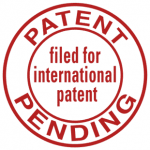Intellectual Property Rights for Global Health
(A version of this Health Alert was published by Forbes.)
 Republican congressional leaders are eager to give President Obama Trade Promotion Authority, or “Fast Track.” Proponents argue that Fast Track will break the logjam holding up important international trade agreements like the Trans Pacific Partnership (TPP), which includes countries as diverse as Australia, Canada, Peru and Vietnam.
Republican congressional leaders are eager to give President Obama Trade Promotion Authority, or “Fast Track.” Proponents argue that Fast Track will break the logjam holding up important international trade agreements like the Trans Pacific Partnership (TPP), which includes countries as diverse as Australia, Canada, Peru and Vietnam.
Fast Track would allow the president to finalize the agreement before sending it to Congress for a straightforward up-or-down vote within a limited time. However, the likelihood of Fast Track resulting in TPP getting a “thumbs up” from Congress is limited by potential differences between the president and the congressional majority on intellectual property rights.
In a recent Wall Street Journal op-ed, Representative Paul Ryan (R-WI) and Senator Ted Cruz (R-TX) asserted that the administration must pursue a number of negotiating objectives, including “beefing up protections for U.S. intellectual property” if it wants Congress to approve the TPP.
It is uncertain the president is as committed to intellectual property as Mr. Ryan and Mr. Cruz hope, especially with respect to patents for medicines. Although the text of the TPP is not yet available to the public, the U.S. Trade Representative, who negotiates in the president’s name, insists that “TPP countries have agreed to reflect in the text a shared commitment to the Doha Declaration on TRIPS and Public Health.”
The 2001 Doha Declaration was an attempt to limit international trade agreements’ commitment to patent rights that were accepted in the World Trade Organization’s 1995 Trade Related Aspects of Intellectual Property Rights (TRIPS) Agreement. It insists that low and middle-income countries should have broad latitude to allow generic drug makers to make copies of patented medicines through a legal mechanism called “compulsory licensing.”
The Doha Declaration was an important achievement for well-intentioned advocates for public health, such as Doctors Without Borders (known also by its French acronym MSF), which has just launched an advertising campaign designed to gut patent rights in the TPP. MSF claims – reasonably – that poor countries and nonprofits cannot afford to pay the prices that manufacturers can negotiate with payers in wealthier countries.
Unfortunately, attacking patents is a misguided way to improve access to medicines in low and middle-income. Although it is a counter-intuitive conclusion, strong patent rights are a better way to achieve this goal.
In an international environment of strong patent rights, innovative drug makers would have every incentive to lower prices voluntarily to poor countries. Costs of manufacturing and distribution are a small percentage of prices charged for patented medicines in the United States. The reason the government recognizes patents is so the manufacturer can charge enough to earn a return on investment in research and development.
Professor Patricia Danzon of the Wharton Business School has recognized this would not prevent the manufacturer from selling the same medicine at a lower price to a lower-income country as long as it can prevent those drugs from flowing back into the high-income country.
Unfortunately, this cannot be guaranteed in poor countries. In 2002, at least three million doses of GlaxoSmithKline’s Combivir® (zidovudine), which had been shipped to Africa for sale at a small fraction of the price in Europe, were found in pharmacies in Germany, the Netherlands and Great Britain. Epivir® (lamivudine) and Trizivir® (abacavir) were also diverted illegally back to Europe.
This resulted in a new approach to increase access to antiretroviral medicine: Instead of viewing the innovative pharmaceutical industry as greedy profiteers, the HIV/AIDS community agreed to cooperate with drug makers to improve health systems in those countries, and prevent piracy of medicines through voluntary licensing. According to the World Health Organization’s 2014 report on access to antiretroviral drugs in low and middle-income countries, voluntary licenses are increasing access to newer patented antiretroviral drugs.
Compulsory licensing, which severs any common interest between innovator and licensee, can lead to patient harm. Roger Bate of the American Enterprise Institute, and colleagues, have published articles demonstrating that low-cost generic drugs are more likely to be counterfeited in low-income countries than brand-named medicines are. Over 10 percent of their samples of medicines available in 17 poor countries failed basic quality tests.
Finally, the best way for poor countries to improve access to safe and innovative medicines is by adopting policies that allow them to create wealth. That includes strong patent protection. Even in India, which has long favored generic drug makers, one innovative drug maker’s CEO recently claimed that poor patent protection has cost the country $10 billion in investment.
Giving the president Fast Track authority to negotiate a TPP with poor patent protection would harm both American innovators and patients in low and middle-income countries.


Amidst any discussion of intellectual property rights, its valuable to understand the political context that exists for 10% of the world’s population that lives out side of the United States. This represents the small number of our world’s citizens who live in a nation with constitutionally defined and regulated free speech. So, all together only 14% of the world’s citizens have these rights. How can we even think about the economics of intellectual property under these circumstances?
Well, that is very true. I can’t say the the economic theory of how IP rights arise is fully settled. Nevertheless, I agree that most would agree IP rights do not develop on their own. They are part of a package of laws and institutions that increase freedom and prosperity.